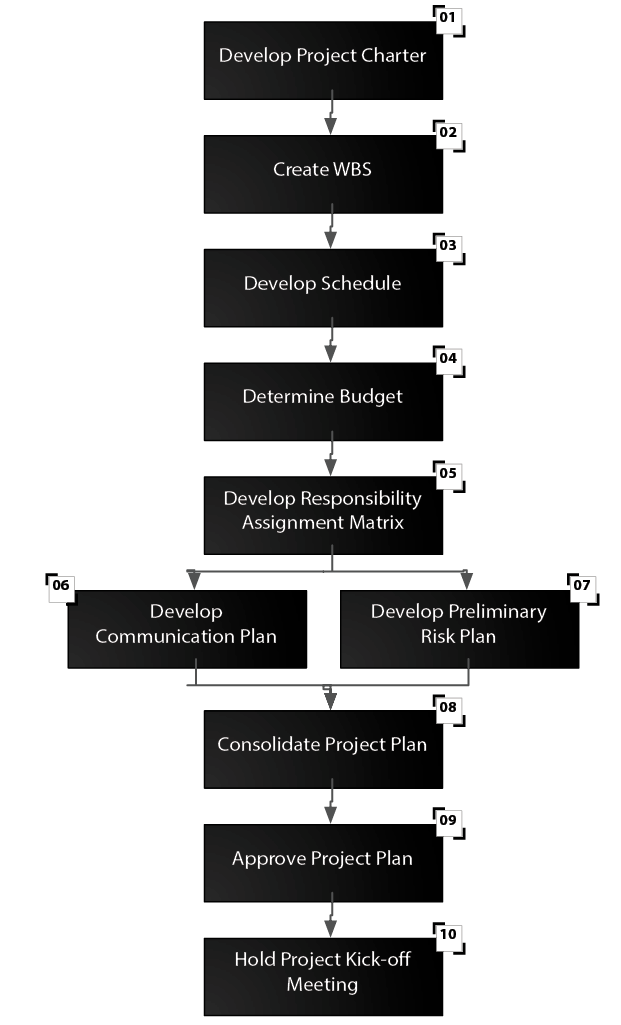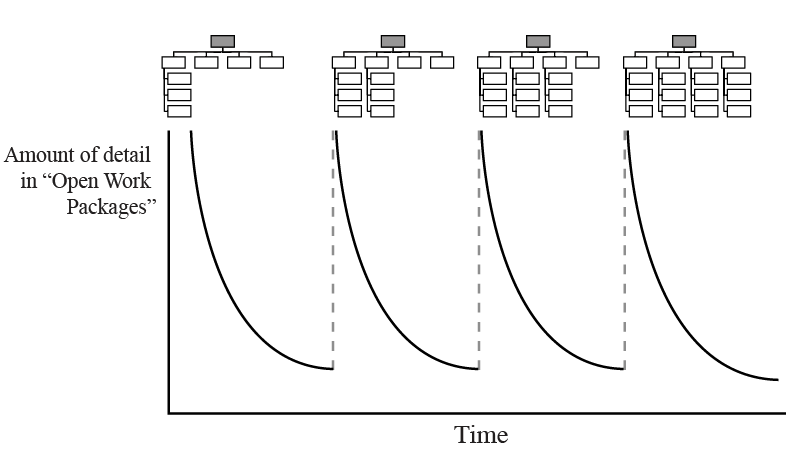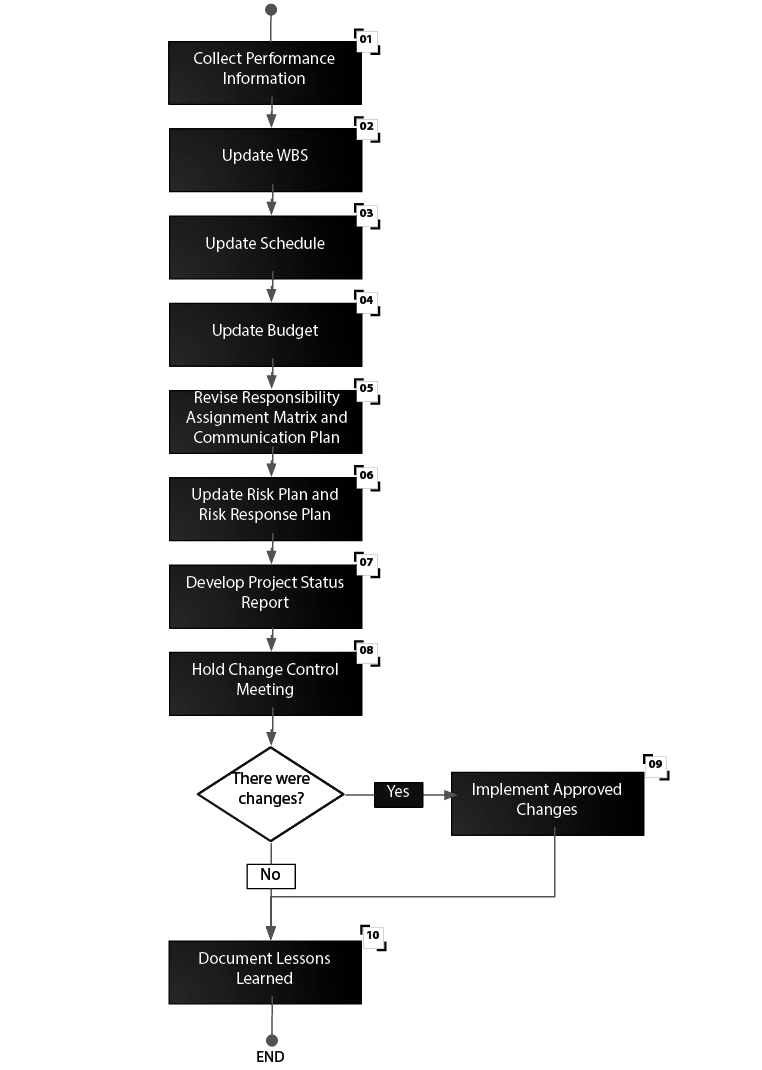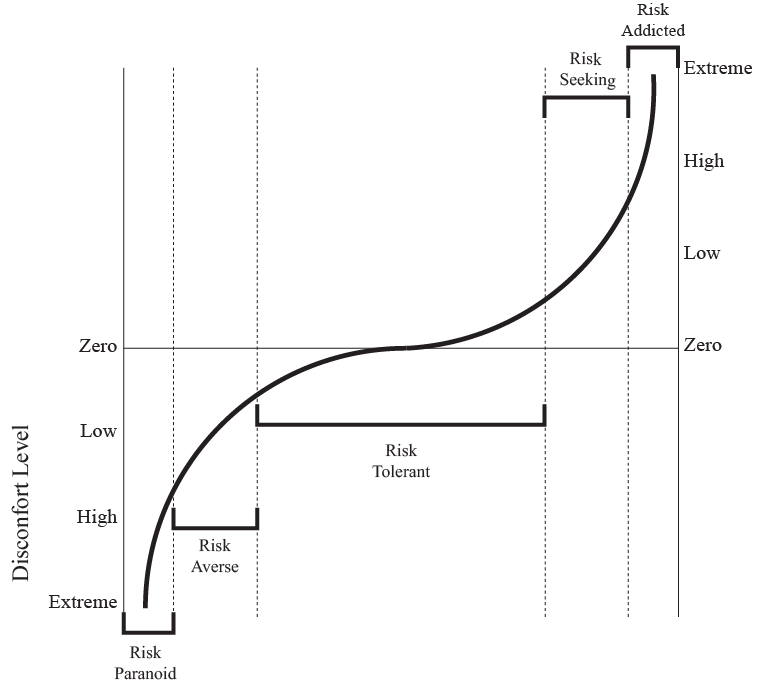Urgency: A Critical Factor in Project Planning
Publications
PMI Global Congress 2011 – North America
Dallas – Texas – USA – 2011
Summary
Given the natural speed and dynamism of the world, agility and sense of urgency has become preponderant in all projects. Challenging deadlines and budget make the management of these projects a risky activity. The more time and cost become challenging, the need for a more meticulous and detailed planning becomes fundamental. On the other hand, the urgency in the planning of these activities often directly affects the quality of the developed plans.
This article aims to discuss the costs and benefits of speed in developing a project plan and proposes a basic process that consists of 10 steps to plan and 10 steps to track a project in a short time. The process aims to simplify and prioritize critical documents to be developed in order to ensure the purpose, scope, deadlines and budgets, as well as direct restrictions of the project to be developed.
Finally, the article presents a list of success factors to be observed to handle and quickly develop effective project plans.
Urgency: the costs and benefits of speed
A project is carried out to produce a beneficial change in the environment and it has three features (TURNER & MÜLLER, 2003):
- • It is unique: there are not equal previous projects.
- • It is new: previous projects did not use the same approach.
- • It is temporary: it has a beginning and an end.
These features produce certain pressures, like the sense of urgency, the uncertainty and the need of integration. The urgency is directly related to the production of results within the shortest time.
Objective | Features | Pressures |
Exhibit 01 – Projects’ features (TURNER & MÜLLER, 2003) | ||
To deliver Beneficial Change | Unique | Uncertainty |
Novel | Integration | |
Temporary | Urgency | |
According to Betty Sue Flowers (MARCUS, 1998), people must have a sense of urgency even when they are facing a good situation. The sense of urgency doesn’t come only from an emerging crisis, but also from the need to be ready for any situation, including opportunities.
Given this scenario, it is essential that the project manager respond immediately to requests from customers and from other interested with a legitimate sense of urgency (KERNION, 1999). Thus, the challenge becomes balancing the sense of urgency and pressure with time for reflection, experimentation and innovation that a unique product or service will require to be developed (EPPLER & SUKOWSKI, 2000).
Simplified flow for the development of project plan
In order to directly attend the need, we need to simplify the management process. Simplification occurs through careful analysis of the processes that may be deemed fundamental and essential. Importantly, only the processes considered crucial must be carried on, since we consider the speed of development as a priority, but it does not mean that other processes that are not listed cannot bring results in project planning.
The proposed flow is based on the PMBOK ® Guide (PMI, 2008), highlighting the sequence of activities that make up the process, starting from a assumption that there is already an assigned project manager. From the detailed processes in the guide, we set up a flow with 10 processes, as highlighted in Exhibit 01 and detailed below.

Exhibit 02 – Simplified flow for the development of Project Plan
1. Develop Project Charter – This process aims to develop the Project Charter that documents the business needs that will be attended by the projects, in addition to obtaining the commitment of areas / people involved and disseminate the official birth of the project to all interested. The Project Charter should be kept unchanged throughout the project. Its update is done in case of extreme change in the project, for example, changing the sponsor or the project manager, or a substantial change in the budget or schedule. The “urgent” Project Charter should also incorporate some elements that traditionally should be in the Scope Statement. In this case, what is proposed is the development of a single document that brings together the main points of the Statement of Scope to the Project Charter.
2. Create the Work Breakdown Structure – Process that aims to develop the main tool of design of the project scope. The project WBS is a hierarchical structure that presents a visual decomposition of the project into smaller, more manageable parts, called “work packages”. It must be constructed as “top-down” and detailed initially up into approximately 3 levels. The other levels will be updated and detailed with the development of projects through rolling waves planning models (GITHENS, 1998).
 Exhibit 03 – Rolling Wave planning (GITHENS, 1998)
Exhibit 03 – Rolling Wave planning (GITHENS, 1998)
3. Develop Schedule – Process that assigns durations to work packages (lower level of WBS) and the precedence relationship between these packages, resulting in the project Network Diagram and Gantt chart. At this stage, the estimated duration of the project is determined.
4. Determine Budget – The objective of this process is developing the estimated cost of the project works that will consolidate the project budget and the baseline costs. The project budget should be developed at the level of detail that is compatible with the actual details of the work and can / should be refined with project updates.
5. Develop Responsibility Assignment Matrix – Process that aims to develop the spreadsheet that defines the responsibilities within the project. It lists the supplies and / or large blocks of WBS with the human resources responsible for implementation and approval of work, as well as the stakeholders to be informed and consulted. It is also known as RACI matrix (ARMSHAW, 2005).
6. Develop Communication Plan – Process that aims to develop a simplified spreadsheet highlighting who will receive the information (identified stakeholders), what is going to be informed, when communication is made, where the information will be collected, the reason why the communication is being performed, who is responsible for communication and how it is done and the cost of production of the information (5W and 2H).
7. Develop Preliminary Risk Plan – The objective of this process is to identify potential project risks using a structured approach to collect and document the identified risks, such as the Nominal Group Technique (NGT), Delphi and Brainstorming (ADAMS & MEANS, 2006). It is suggested that only threats are identified, ruling out opportunities for the process to be developed faster. Then, the identified risks are analyzed in terms of probability, impact and urgency, allowing that action plans can be developed in response to major risks. The risk plan will be updated throughout the work.
8. Consolidate Project Plan – Process that groups the documents previously produced in the Project Plan. Any presentations and supporting documents can also be consolidated into the plan to facilitate the process of presenting the project for approval.
9. Approve Project Plan – The objective of this process is to ensure that the responsible for the approval can review the documents and the analysis developed in the project plan, ensuring that all deliveries are planned in accordance with the stated objectives. The approval authorizes the commencement of work and turns the project plan approved at the baseline assessment of performance.
10. Hold Project Kick-off Meeting – The Project kick-off meeting is an extremely important event because it aims to promote the start of project activities and how it should contribute to achieving the Organization’s strategic objectives. In addition to constitute itself as an opportunity that seeks to ensure the Organization’s commitment to the project, it is considered the first work meeting of the core project team, in which the plan is presented, always seeking the involvement of the stakeholders.
Simplified flow for project monitoring and control
The update of the project plan developed according to the previous process can also be presented by 10 (ten) simplified procedures, including the approval process and implementation of changes. The simplified procedure for updating the plan is carried out repeatedly for each monitoring cycle.
The cycle time is determined by a function of the duration of the project and organizational planning parameters (ROSENHEAD, 2008). Usually, a project must have its monitoring cycle every 10% of the projected length; the minimum interval between cycles is 1 day and the maximum interval between cycles is 30 days. As an example, a project of 10 weeks suggests a break between cycles of 1 week as a project of 20 weeks suggests a break between cycles of 2 weeks.
The simplified flow for project monitoring and control is shown in Exhibit 04.

Exhibit 04 – Simplified Flow for the Project Monitoring and Control
1. Collect Performance Information – The goal of this process is to obtain information on the performance of the project with the team, the suppliers, etc. The collection can be done in a structured way or through adaptations and simplifications of agile models, such as parts of the dynamics model for the collection and exchange of information taken at meetings of Daily Scrum of the Scrum model, for example (SCHWABER, 2010). It is important to emphasize that the goal of the process is the collection of information and not decision making.
2. Update WBS – The objective of this process is to update the Work Breakdown Structure (WBS) so that it continues to reflect all deliveries made in the cycle. The remaining work should be evaluated, and the drawing of future deliveries should be performed if necessary. We must pay important attention to the difference between detailing future deliveries and creating new deliveries. The creation of new deliveries that are not expected is a classic case of a sprawl of scope (scope creep) (KUPRENAS & NASR, 2003).
3. Update Schedule – Process that aims to identify the work already done and their deadlines, as well as updates on the WBS, seeking to update the schedule and determine the project deadline. The new timing and deadline will be compared with the approved schedule (baseline) to assess the performance of the project.
4. Update Budget – The objective of this process is to assess the outlay for carrying out the work cycle and update the remaining budget. The new budget will be compared with the approved budget (baseline) to evaluate the performance of the project.
5. Revise Responsibility Assignment Matrix and Communication Plan – The objective of this process is to update the Responsibility Assignment Matrix and Communication Plan. During the implementation of the project changes beyond the responsibilities inherent to the project, there are often roles exchanging and refinements in responsibilities, that causes changes in the Responsibility Matrix. The communication results are evaluated in this process to check if any element of communication needs to be created, deleted or amended in accordance with the behavior of the stakeholders. It aims to ensure that only valid information that supports the decision and the need for information will be produced, avoiding unnecessary stress on the production of useless information.
6. Update Risk Plan and Risk Response Plan – The objective of this process is to update the Risk Plan by identifying new risks and reviewing the already identified risks. The status of existing action plans and the evaluation of their effectiveness are also performed in this process.
7. Develop Project Status Report – The objective of this process is to consolidate all executive information in a simple and straightforward report. The target audience of the report is defined in the Communication Plan and its contents present summary information about the performance of the project cycle and recommendations for change.
8. Hold Change Control Meeting – The objective of this process is to communicate the status of the project cycle, analyze the proposed change requests and decide on their incorporation (or not) to the projects.
9. Implement Approved Changes – Process that aims to incorporate the approved changes to the project plan, including quick review of the documents already developed and appropriated communications about the implemented changes to the stakeholders.
10. Document Lessons Learned – Process that aims to consolidate the lessons learned collected during the last cycle of the project. The lessons contain the record of positive experiences, such as improvements in processes and good management decisions, in addition to the negative experiences that have occurred and the points that should be improved identified during the project.
Assumptions and success factors
Developing project plans quickly requires a different environment from the conventional planning. It is crucial to understand some assumptions and success factors to proper understand not only the process but also the results.
Initially, it is important to note that the results obtained with this model are less detailed than those of conventional planning based on the PMBOK ® Guide. This model assumes a reduction in the existing procedures in order to accelerate the development process, and areas of knowledge related to the scope, time, cost, risk and communications were prioritized. This does not mean that other areas are less important.
The documents produced must be simple and straightforward, if there are document templates in the Organization, only their essential fields should be used. It is important to advice that essential is different from important. Essential fields and information are the kind of information that can make the planning not viable if they are not provided. Another advice is to produce the documents using the usual market software such as spreadsheets and texts processors. Integrated and interrelated complex systems increase the ability to control and have many benefits; however, they may not provide the mobility and flexibility required for the accelerated development of the plan.
It is suggested that project planning is performed using the concept of rolling waves (GITHENS, 1998), in order to detail with precision the immediate work and with less accuracy the medium and long term work. These works of medium and long term will be detailed in future update cycles.
Also, quick planning requires a degree of tolerance to risks bigger than the required by the conventional planning (HILSON & MURRAY–WEBSTER, 2005). We can observe, in Exhibit 05, that profiles that have a high degree of discomfort with the uncertainty (Paranoid and Averse) present more difficult to plan, execute and decide on a scenario of urgency due to the high degree of discomfort found in these occasions. Therefore, the proposed process might not fit for all organizations in all cases.

Exhibit 05 – Response to Uncertainty (HILSON & MURRAY-WEBSTER, 2005)
Finally, it is suggested that planning work should be done as a team, following classical models of co-location ( or war room), in which the project team works most of the time in the same physical space and keeps in touch face to face (MEARMAN, 2004). This type of work allows a better communication, a reduction in business “silos”, an increase in capacity and knowledge sharing in an emergency scenario, and makes the decision process more responsive and effective.
Conclusions
Quick planning aiming to attend the continuous need and the sense of urgency of the organizations is a clear trend in working with projects. In order to satisfy this critical sense of urgency, many projects are implemented without any planning because planning takes time and affects the sense of urgency required.
The proposed model aims to attend this specific scenario, it is a simplification of the planning reality and it does not intended to replace the conventional model of project planning, in which concepts, methods and market standards must be evaluated and structured in the project planning.
When there is a minimum acceptable time for the development of a structured plan, this plan becomes essential and should address in greater detail the knowledge areas outlined in PMBOK ® Guide (PMI, 2008), as well as other concepts and market standards. The use of the proposed model is only recommended when there is no possibility of building a structured plan for the project.
REFERENCES
ADAMS, T & MEANS, J. (2006). The Project Meeting Facilitator. Seattle: PMI Global Congress North America.
ARMSHAW, D. (2005). There has to be a Better way than this! How to get big benefits from Project management basics. Edimburg: PMI Global Congress EMEA.
EPPLER, M. J. & SUKOWSKI, O. (2000). Managing Team Knowledge: Core Processes, Tools and Enabling Factors. London: European Management Journal Vol. 18, No. 3
GITHENS, G D. (1998). Rolling Wave Project Planning. Long Beach: PMI Annual Symposium and Congress.
HILSON, D. & MURRAY-WEBSTER, R. (2005). Understanding and Managing Risk Attitude, Burlington: Gower.
KERNION, D. M. The Project Manager—A Key Player in the Consulting Engineering Firm’s Marketing Plan. Long Beach: PMI Annual Congress and Symposium.
KUPRENAS, J. A. & NASR, E. B. (2003). Controlling Design-Phase Scope Creep. Morgantown: AACE Transactions.
MARCUS, G. (1998). Corporate Futures, Vol. V. Late Editions Series. Chicago: University of Chicago Press.
MEARMAN, M. (2004). Implementation Project Management: Now that You Bought it What Do You Do? Anaheim: PMI Annual Symposium and Congress.
PMI (2008). PMBOK: A Guide to the Project Management Body of Knowledge: Forth Edition. Newtown Square: Project Management Institute.
ROSENHEAD, R. (2008). Let’s Make Those Project Meetings More Effective. Available at http://www.projectsmart.co.uk/pdf/make-those-project-meetings-more-effective.pdf
SCHWABER, K. (2010). Agile Project Management with Scrum. Redmond: Microsoft Press.
TURNER, J. R. & MÜLLER, R. (2003). On the nature of the project as a temporary organization. Amsterdam: International Journal of Project Management.
Urgent Project , Planning , Rolling Wave Planning